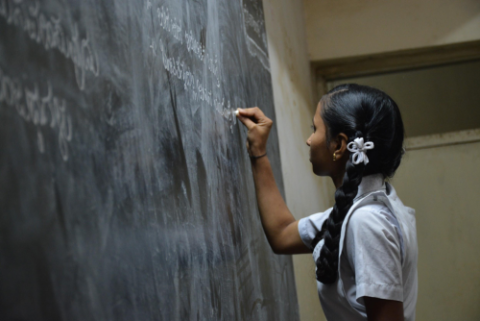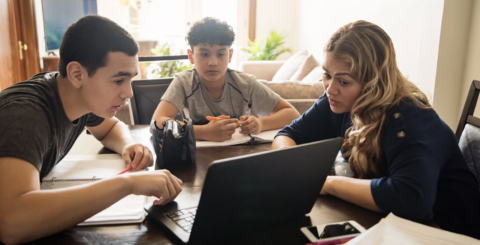At the CTTL, we’re focused on using the best of Mind, Brain and Education Science research to help teachers maximize their effectiveness and guide students toward their greatest potential. Doing that often means addressing what we like to call “Learning Myths”—those traditional bits of teaching wisdom that are often accepted without question, but aren’t always true. We also like to introduce new insight that can change the classroom for the better. In our Learning Myths series, we’ll explore true-or-false statements that affect teacher and student performance; for each, we’ll dive into the details that support the facts, leaving teachers with actionable knowledge that they can put to work right away.
True or False? Teaching students how to multitask will help them work more efficiently.
Answer: False! The human brain is actually unable to multitask. In reality, it switches back and forth between tasks—but there is a transaction cost each time it does so, which makes “multitasking” less efficient than focusing on one task at a time (or “monotasking”).
How can teachers put this insight into action?
Teachers are constantly trying to manage many inputs at once. It can be tough to resist attempting to multitask, especially as technology seeps into every aspect of our lives, and as productivity becomes more and more synonymous with our measurements of success. However, it’s crucial for teachers to learn how to focus on one thing at a time so that their students can follow suit. Otherwise, the switching costs can become overwhelming, impeding learning and exhausting a student’s active working memory as her mind scurries from one thing to another and back again.
We’ve collected some actionable ways for teachers to encourage focus and monotasking in the classroom:
-
Be careful not to give instructions to students while other things are happening (i.e. after the bell has rung and their friends are walking out the door, or after they’re already focused on a particular task you’ve assigned).
-
Avoid asking students to read and listen to you speaking at the same time. Let them engage in one kind of processing at a time. (Using multiple modalities within one kind of processing, i.e. showing pictures next to text, is okay.)
-
Figure out what’s really important, communicate that importance to your students, and engage them in paying attention to that one thing while you’re teaching it. Students don’t learn unless they engage, and they’re more likely to do so when they understand the weight of a particular lesson.
-
Be critical about how you use technology in the classroom. Tech can open up a huge range of knowledge and experiences for students, but it can also contribute to dividing their attention. Make sure that your tools don’t encourage scattered brains!
Hungry for more actionable insight? The CTTL’s newest endeavor, Neuroteach Global, helps teachers infuse their classroom practices with research-informed strategies for student success—in just 3-5 minutes a day, on a variety of devices. (Yes, we’re taking our own advice and using technology to help you monotask!)




